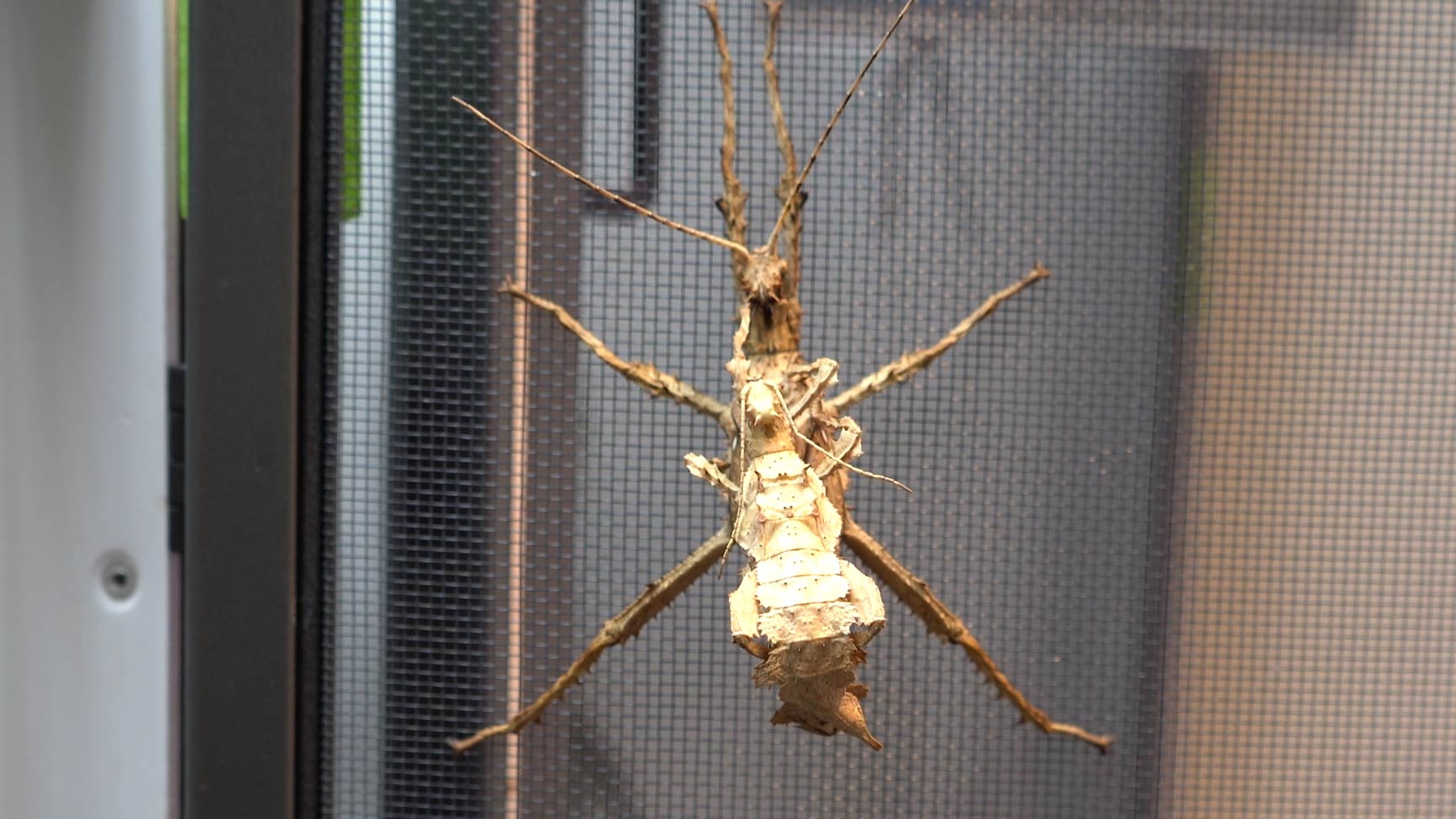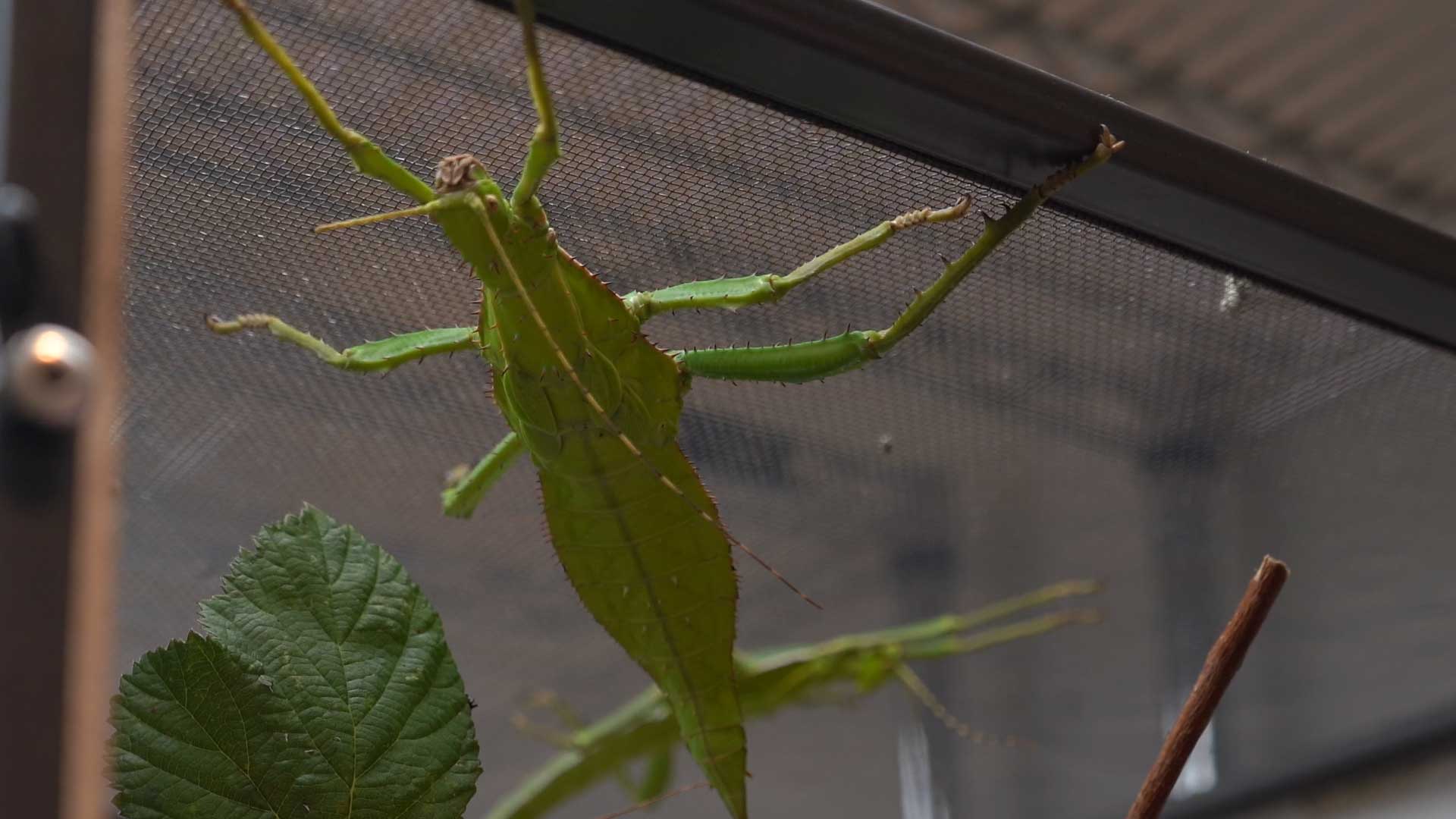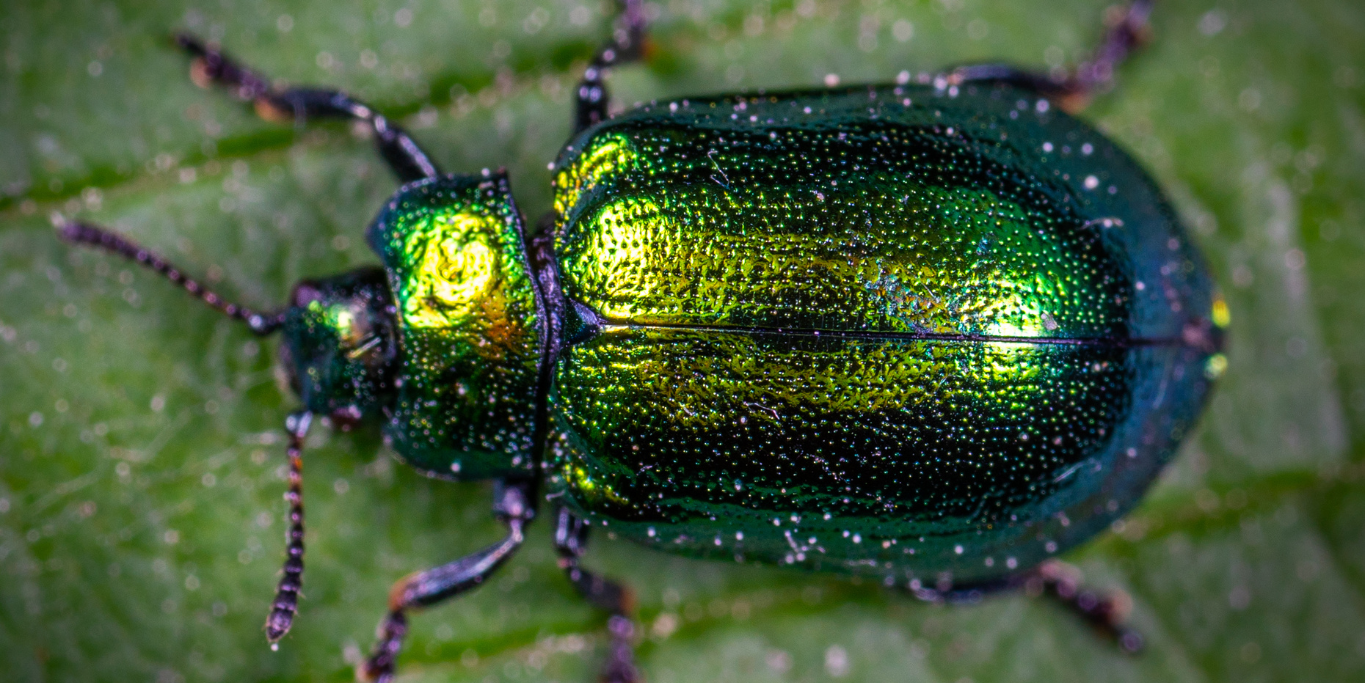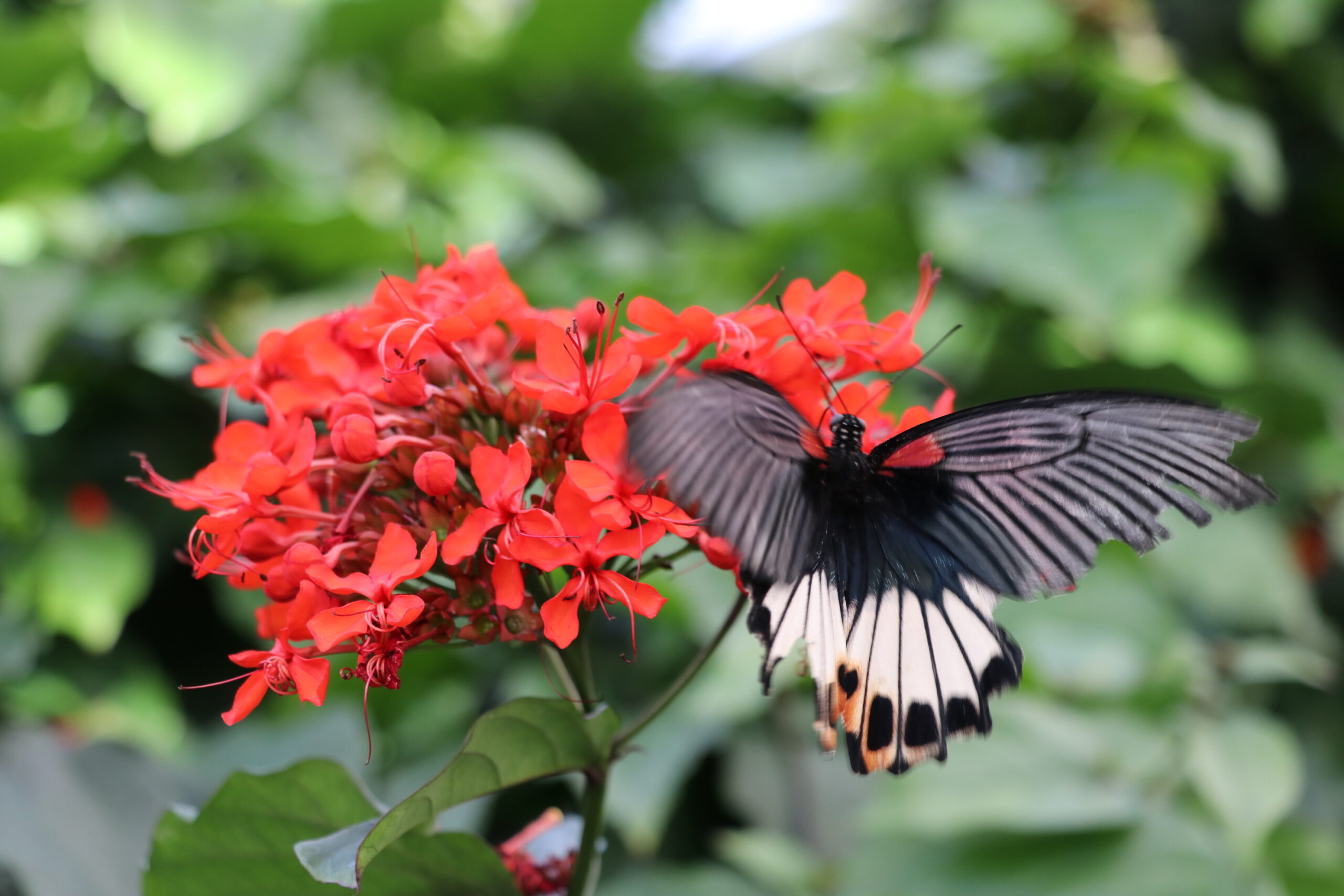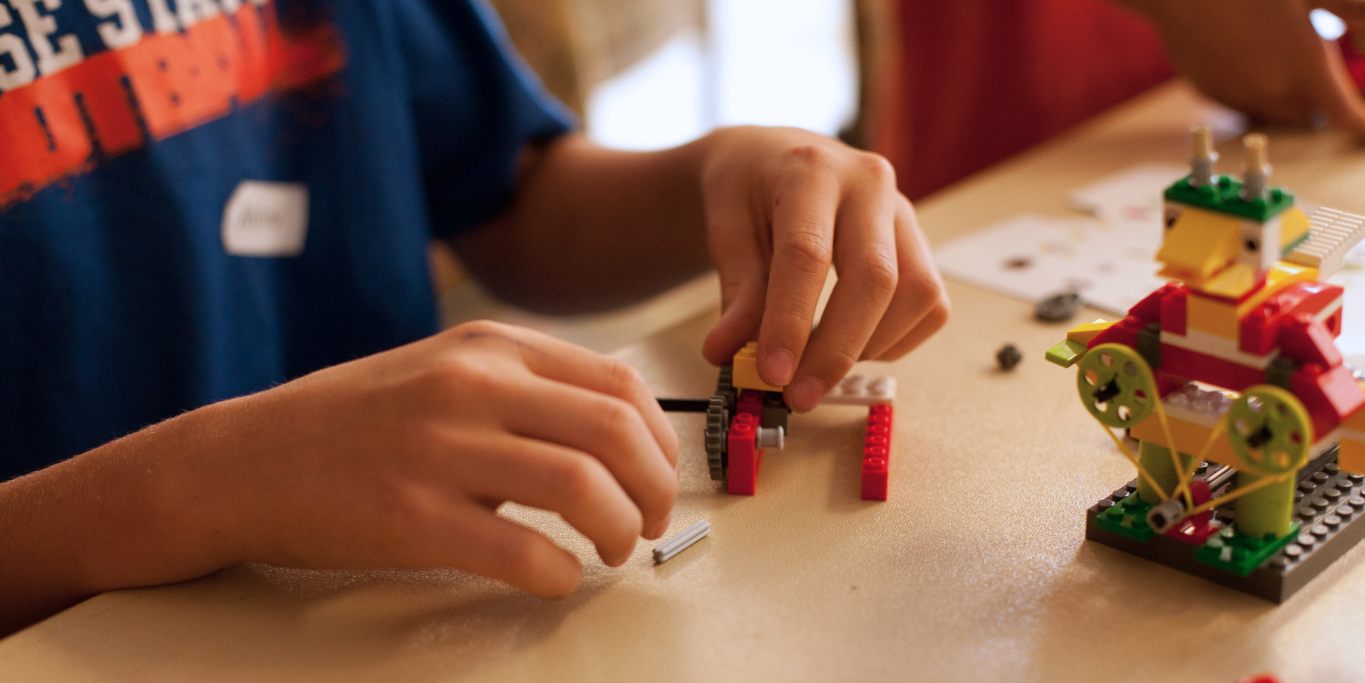Walking sticks are insects that belong to their own order – Phasmida or Phasmatodea. This order is characterized by bugs that look like plants and sticks. If you’ve been in the Biosphere, it’s likely you’ve seen them in our Invertebrate Adventure exhibit, but then again, maybe not. Blending in is their specialty.
Surprisingly, not all walking sticks look like…well, sticks. They come in a variety of shapes and sizes. Some might look like a thick blade of grass, a traditional twig, or a flat leaf. Some are big and heavy-bodied, while some are long and thin. Overarchingly, they are known for their ability to camouflage, but some don’t camouflage at all. For example, the Black Beauty walking stick is black with gold eyes and little red wings. I don’t know many natural environments those features would disappear into.
Walking sticks use their camouflaging ability to protect themselves. Our Chief Entomologist, Marissa Harrison says, “All of them are herbivores, harmless plant eaters. They’re slow-moving, they don’t run or jump. They don’t bite or sting. Most of them rely on camouflage for their defense.” What about the ones that can’t camouflage? Are they just left defenseless, served up to the birds and mice? Don’t worry, they still use their color for defense. Their color signifies to other animals and predatory insects that they are poisonous. Though, not poisonous to humans – if a human did happen to eat a Black Beauty walking stick, they would probably just feel a bit nauseous and throw it up. In fact, walking sticks may just be the perfect starter insect for people with a bit of entomophobia. They’re not going to scamper into a corner. They won’t hurt you. Their features replicate something we are familiar with. When you hold one, their sticky pad feet take a little getting used to, but once you do, they’re quite fascinating.
Their suction cup hook feet are designed for climbing. It’s one of the things they’re best at. They don’t have great vision and they are mostly nocturnal, so they use their antennae to sense their surroundings and use their sticky feet to climb all over trees and branches. Where they can be found depends on the species. Marissa says, “The majority of them are tropical or subtropical, and then the diversity really thins out the more temperate you get.” They are rare in Utah, and if you do find one, it is likely to be small and very thin.
What’s another thing they’re best at? Reproduction. Marissa explains, “A lot of species can reproduce by parthenogenesis, so they can just clone themselves. That happens most often when it’s hard to find males. They will reproduce sexually, but if they can’t find males, they will also reproduce asexually. And in some species, we’ve never even seen a male before.” Walking sticks only live up to 18 months, so without this amazing capability, they would have gone extinct a long time ago.
We have quite a few walking sticks in the Biosphere: Australian Prickly Walking Stick, Jungle Nymph, Philippines Leaf Insect, Black Beauty Stick Insect, Giant Stick Insect, and Giant Malayan Stick Insect. Come visit us to observe and learn all about them!
